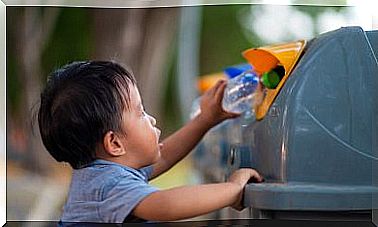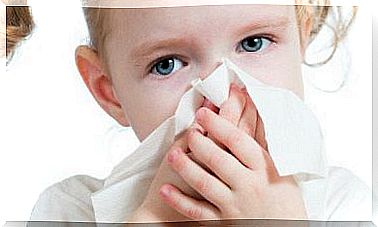Promoting Resilience In Childhood

Resilience is the ability to face difficult situations and, despite them, come out stronger. Although children should receive the protection and care of adults, promoting resilience and these capacities from an early age can be a good resource to develop progressive autonomy.
Researchers from the Minnesota Department of Health in the United States determined that resilience is the result of a set of dynamic interactions between a person’s adverse experiences and their protective factors. Although the above may seem complex, we will try to clarify the issue.
Promoting resilience and its practical application in real life
It is not uncommon to see individuals and families who have experienced extremely difficult situations in their lives and yet manage to tolerate adversity. On the contrary, it is possible that we meet families and friends who at the slightest contingency seem to collapse. What is it that differentiates them?

Undoubtedly, there are genetic, social, behavioral factors that are responsible for these differences, but different studies agree that the answer lies in the so-called resilience. Physics has already dealt with it by referring to the elasticity of certain objects that, despite the pressures, retained their original shape.
Resilience: does it make us different?
Two families traversed by the pain of the loss of a child go through mourning in a different way. While one of them succumbs to the tragedy, the other family (as an example) manages to overcome the different stages of mourning that range from:
- The anger.
- The sadness.
- The acceptation.
Promoting resilience: source of substantive change
Resilience, thus, seems to be the link that can generate a substantive change in the way of visualizing problems and acting accordingly. It is nourished by:
- Self-esteem.
- Self-confidence.
- Spirituality.
- Sense of humor.
Often listed among life skills, resilience has featured prominently in the past decade and continues to prevail. Without implying homologate it to the panacea that will preserve us from all difficult situations, it is of interest to incorporate the learning of resilience in educational classrooms.

In summary
Resilience is the ability of a person to overcome their own problems and even transform obstacles into strengths. While there may be certain biological or innate components, the good news is that resilience can be learned and apprehended.
Thus, including teachers, health professionals and the family itself in resilience training programs represents a resource and, in particular, a challenge to build and consolidate.










